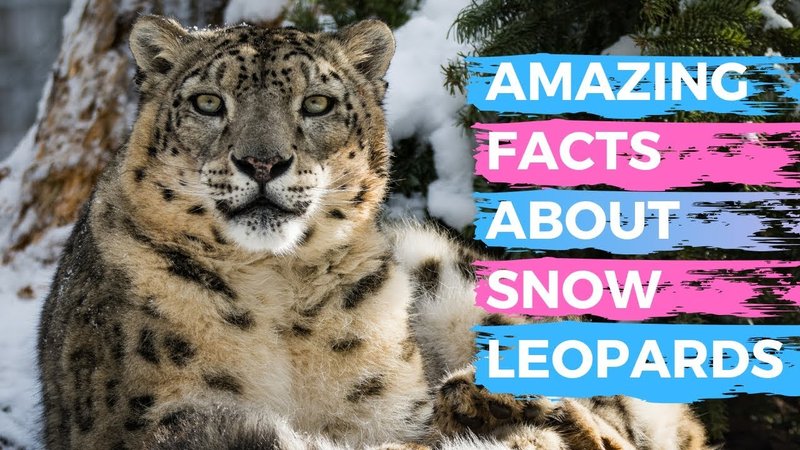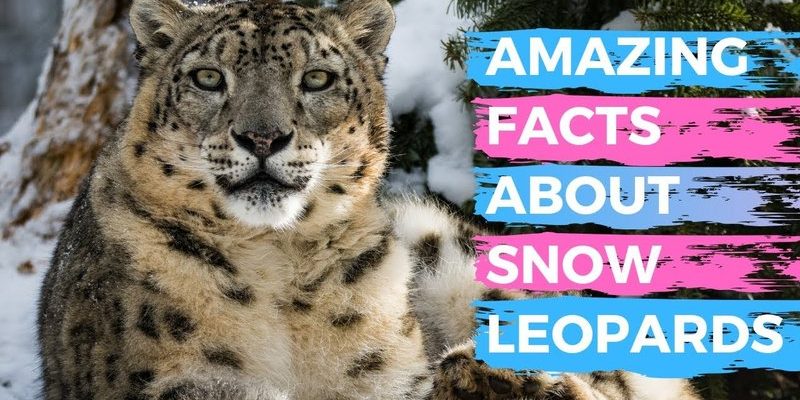
So, what makes snow leopards so interesting? Well, they have a unique set of characteristics and behaviors that set them apart from other big cats. Whether you’re an animal enthusiast or just curious about wildlife, learning about snow leopards can reveal the beauty and fragility of nature. Let’s dive into ten fascinating facts that paint a vivid picture of these incredible animals.
1. Expert Mountain Climbers
Snow leopards are like the mountain goats of the cat world. They have powerful legs and long tails, which help them balance on rocky cliffs and steep slopes. These adaptations are crucial for their survival in the harsh environments of the Himalayas and other mountain ranges. Their large paws act like snowshoes, distributing their weight over snow to prevent them from sinking.
You might be wondering, how do they manage to hunt in such challenging terrain? Well, snow leopards rely on their stealth and agility. They can leap up to six times their body length in a single bound! This skill allows them to pounce on unsuspecting prey, making them efficient hunters even in the most rugged landscapes.
2. Unique Camouflage
The snow leopard’s thick, smoky-gray fur is more than just a pretty coat—it’s a clever survival tool. The dark rosettes and spots help them blend into the rocky, snowy environments where they live. This camouflage allows them to stalk their prey without being noticed.
Think of it like wearing a cleverly designed outfit that helps you blend into your surroundings during a game of hide-and-seek. This natural disguise is essential for hunting, as snow leopards primarily feed on animals like ibex and blue sheep, which are also masters of their rugged environment.
3. Solitary Hunters
Snow leopards are not social cats. In fact, they typically prefer a solitary life, sometimes coming together only during mating season. This solitary nature helps them avoid competition for food and territory. Each snow leopard has a defined home range, and they can cover vast distances to find the best hunting grounds.
It’s fascinating to consider how their solitary lifestyle shapes their behavior. While other big cats might live in prides, snow leopards thrive on their own, using their keen senses to navigate their sometimes harsh living conditions and find adequate food sources.
4. Specialized Diet
Speaking of food, let’s talk about what snow leopards eat. Their diet mainly consists of mountain-dwelling animals, like ibex, blue sheep, and even smaller mammals like rabbits. Because of the challenging terrain, snow leopards must be strategic in their hunting methods.
They often use their incredible eyesight, which is significantly better than that of humans, to spot their prey from a distance. Once they have a target, they rely on patience and stealth to close in, using the terrain to their advantage. It’s almost like a game of chess—each move carefully planned.
5. Adaptations to Cold
Snow leopards have a number of adaptations that help them thrive in cold environments. Their thick fur not only keeps them warm but also has a woolly undercoat that insulates them against freezing temperatures. Additionally, their small, rounded ears minimize heat loss, while their long tail helps them maintain balance and can also wrap around their bodies for warmth.
Imagine wearing the coziest sweater and thick socks in a winter wonderland! Snow leopards are essentially dressed for success when it comes to surviving the cold.
6. Communication Skills
Even though they are solitary animals, snow leopards have their own ways of communicating. They use a variety of vocalizations, such as growls, chuffs, and meows, to convey their feelings or signals to other snow leopards.
Also, they leave markings on rocks and trees, letting others know that a snow leopard has been in the area. It’s like leaving a friendly note for someone passing by, signaling, “Hey, I was here!” This communication is especially important during mating season or when establishing territories.
7. Conservation Status
Sadly, snow leopards are classified as vulnerable by the International Union for Conservation of Nature (IUCN). Habitat loss, poaching, and retaliatory killings by herders pose significant threats to their population. With an estimated 4,000 to 6,500 snow leopards left in the wild, conservation efforts are more crucial than ever.
Organizations are working diligently to protect these amazing big cats and their habitat. Some efforts include educating local communities about the importance of snow leopards and promoting coexistence strategies to reduce conflict with livestock.
8. Reproductive Life Cycle
Snow leopards have a unique reproductive cycle that takes place mostly in late winter. After a gestation period of about 90 to 100 days, female snow leopards give birth to 2 to 4 cubs in secluded dens, often located in rocky outcrops.
These young cubs are adorable and are born with their eyes closed. They gradually open their eyes after about a week and start to explore their surroundings. The mother is incredibly protective and teaches her cubs essential survival skills, like hunting and navigating the challenging terrain.
9. Longevity and Lifespan
In the wild, snow leopards typically live around 10 to 12 years. However, in captivity, they can live longer, often reaching up to 20 years of age. This difference in lifespan can be attributed to the absence of natural dangers, more reliable food sources, and medical care.
You might find it heartwarming to know that these dedicated animals can forge deep bonds with their caregivers in sanctuaries and zoos, showcasing their intelligent and curious nature.
10. Cultural Significance
Snow leopards hold a special place in the cultures of the regions they inhabit. In many Central Asian cultures, they are seen as symbols of strength, beauty, and adaptability. They are often featured in folklore and local art, highlighting their importance to both the ecosystem and human culture.
You could think of snow leopards as the majestic guardians of the mountains, embodying the spirit of the wild and the resilience of nature in a way that resonates with many communities.
In conclusion, snow leopards are truly remarkable creatures that inspire awe and respect. From their impressive adaptations to their crucial role in the ecosystem, these big cats remind us of the beauty of wildlife and the need for conservation. So the next time you think about snow leopards, remember—they’re not just fascinating animals; they’re a vital part of our planet’s natural heritage.

